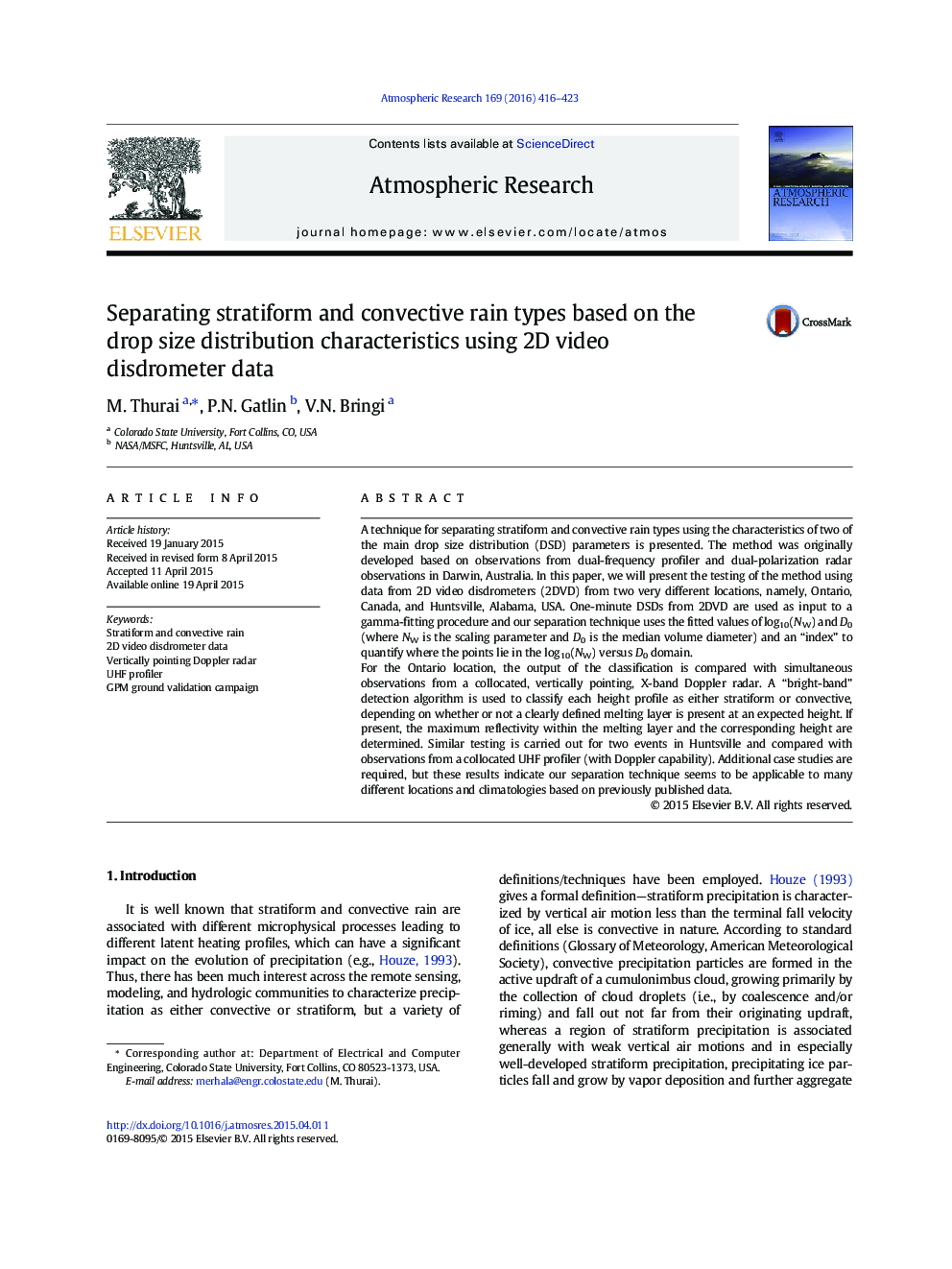| Article ID | Journal | Published Year | Pages | File Type |
|---|---|---|---|---|
| 4449615 | Atmospheric Research | 2016 | 8 Pages |
•A method to separate stratiform and convective rain based on drop size distribution parameters is presented.•Data from 2D video disdrometers in two different locations are utilized, as well as previously published data.•Verifications using collocated vertically-pointing Doppler radars/profilers are shown.
A technique for separating stratiform and convective rain types using the characteristics of two of the main drop size distribution (DSD) parameters is presented. The method was originally developed based on observations from dual-frequency profiler and dual-polarization radar observations in Darwin, Australia. In this paper, we will present the testing of the method using data from 2D video disdrometers (2DVD) from two very different locations, namely, Ontario, Canada, and Huntsville, Alabama, USA. One-minute DSDs from 2DVD are used as input to a gamma-fitting procedure and our separation technique uses the fitted values of log10(NW) and D0 (where NW is the scaling parameter and D0 is the median volume diameter) and an “index” to quantify where the points lie in the log10(NW) versus D0 domain.For the Ontario location, the output of the classification is compared with simultaneous observations from a collocated, vertically pointing, X-band Doppler radar. A “bright-band” detection algorithm is used to classify each height profile as either stratiform or convective, depending on whether or not a clearly defined melting layer is present at an expected height. If present, the maximum reflectivity within the melting layer and the corresponding height are determined. Similar testing is carried out for two events in Huntsville and compared with observations from a collocated UHF profiler (with Doppler capability). Additional case studies are required, but these results indicate our separation technique seems to be applicable to many different locations and climatologies based on previously published data.
